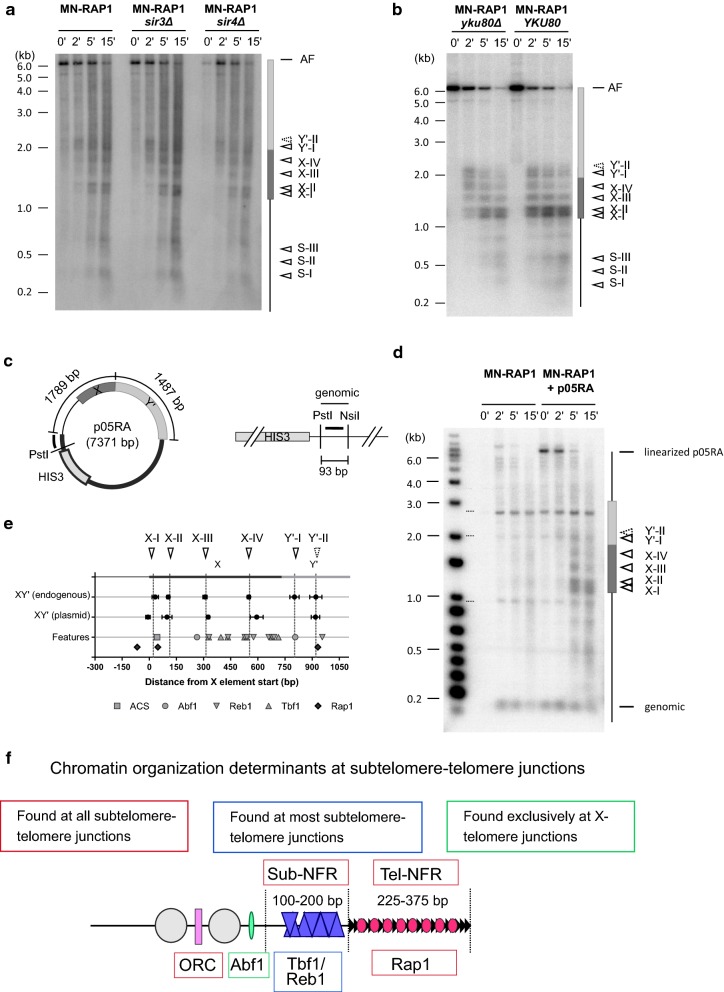Fig. 6.
No evidence of a stable telomere foldback structure by in vivo ChEC. a In vivo ChEC analysis of the PvuI fragment of TEL05R (as in Fig. 5b) obtained with MN-Rap1 in WT cells (EPY007), sir3Δ cells (EPY131) and sir4Δ cells (MVL054). b Same as in a but analysis obtained with MN-Rap1 from WT (EPY007) and yku80Δ cells (EPY070). c Schematic drawing of the circular plasmid (p05RA) encompassing the TEL05R XY’ junction. Thick line corresponds to plasmid backbone whereas thin line corresponds to TEL05R XY’ junction sequences. The probe used in d is depicted by a solid black line next to the PstI site. This probe also hybridizes the genomic HIS3 locus depicted on the right. d In vivo ChEC experiments with MN-RAP1 (EPY007) and MN-Rap1 + p05RA, analyzed with the probe indicated in c. The Southern blot contained PstI- and NsiI-digested genomic DNA. Time of MNase activity in minutes is indicated on top of gel. MNase-induced cutting is indicated by arrowheads (solid line: cutting previously identified in Fig. 5b as common to all MNase-fused proteins; arrowhead with dotted line corresponds the previously identified cutting specific to MN-RAP1 in the same blot) e Location of MNase-sensitive sites on the TEL05R XY’ junction fragment for the endogenous locus (top) and on the circular plasmid (middle). The position of features (ACS, Abf1, Tbf1, Reb1 and Rap1 potential binding sites) is included on bottom. f Determinants of chromatin organization at budding yeast subtelomere–telomere junctions

